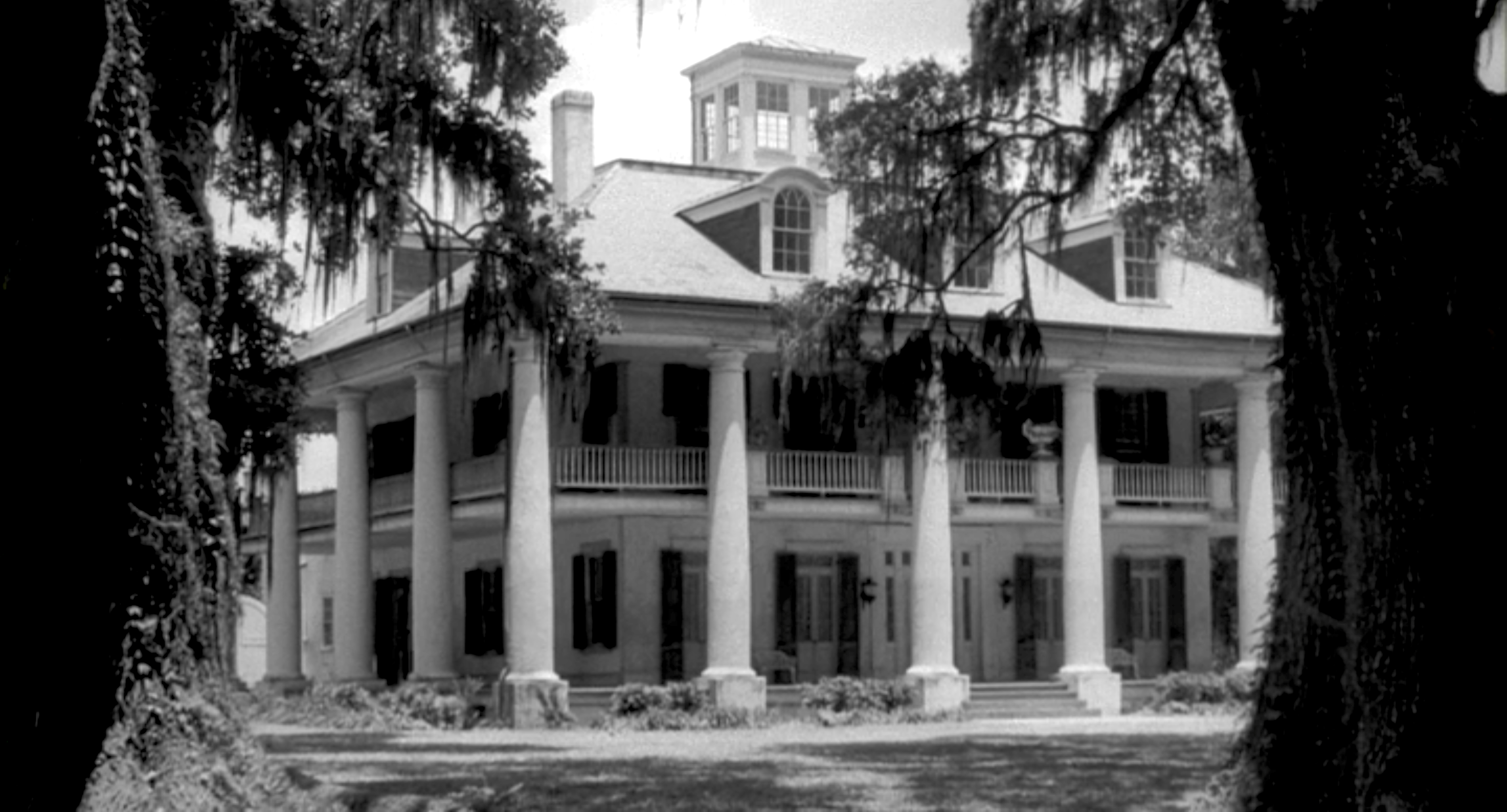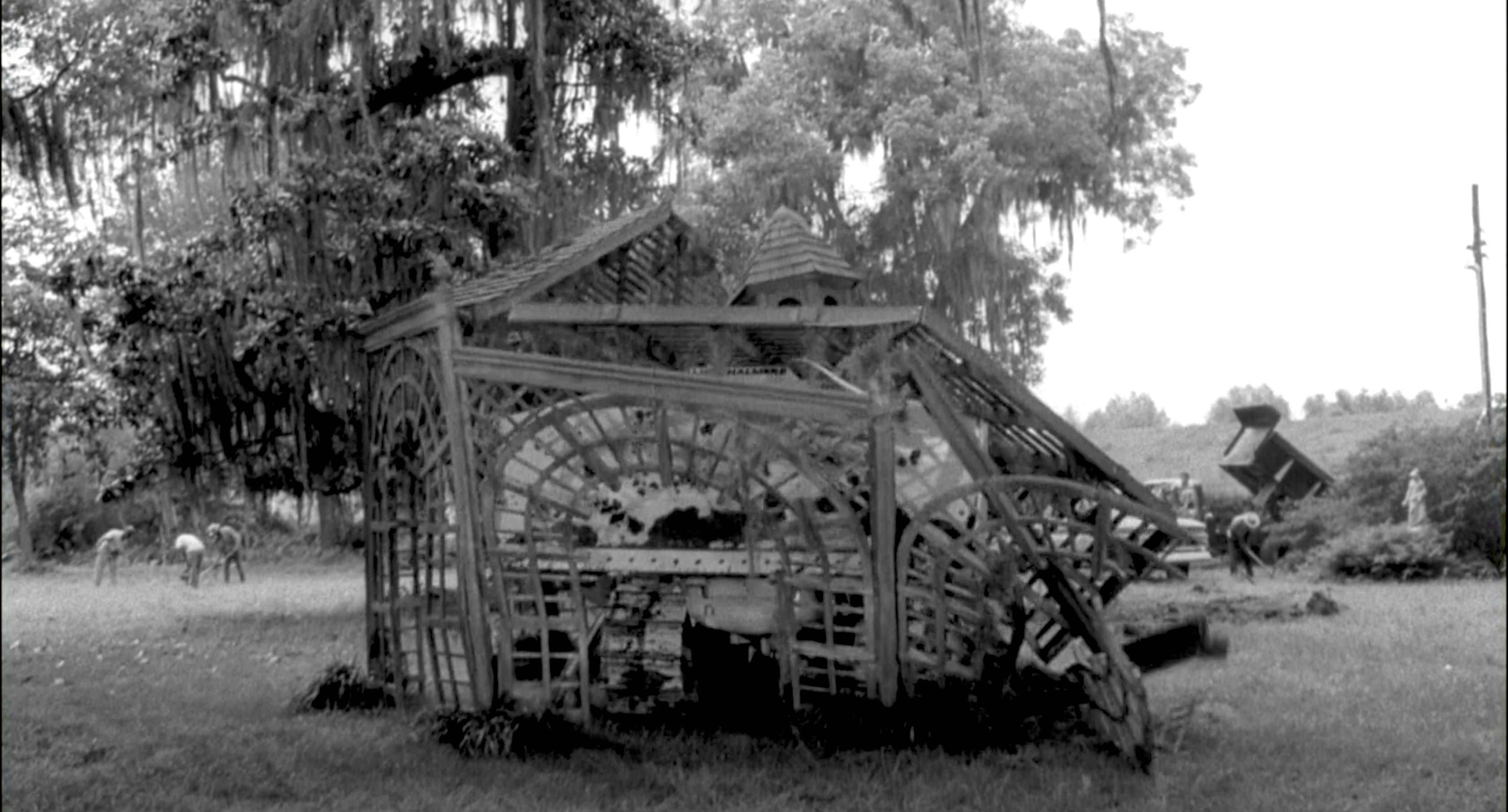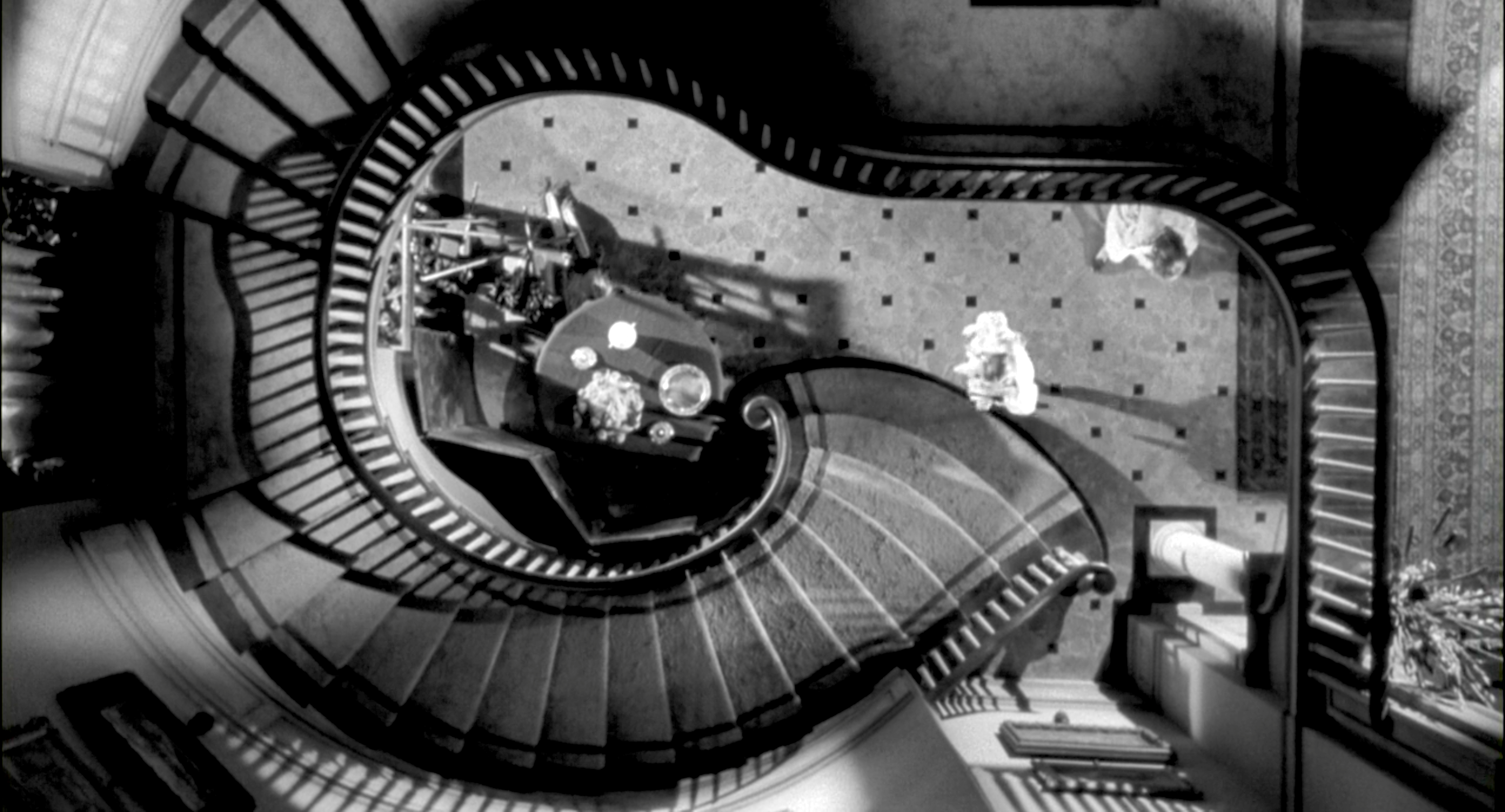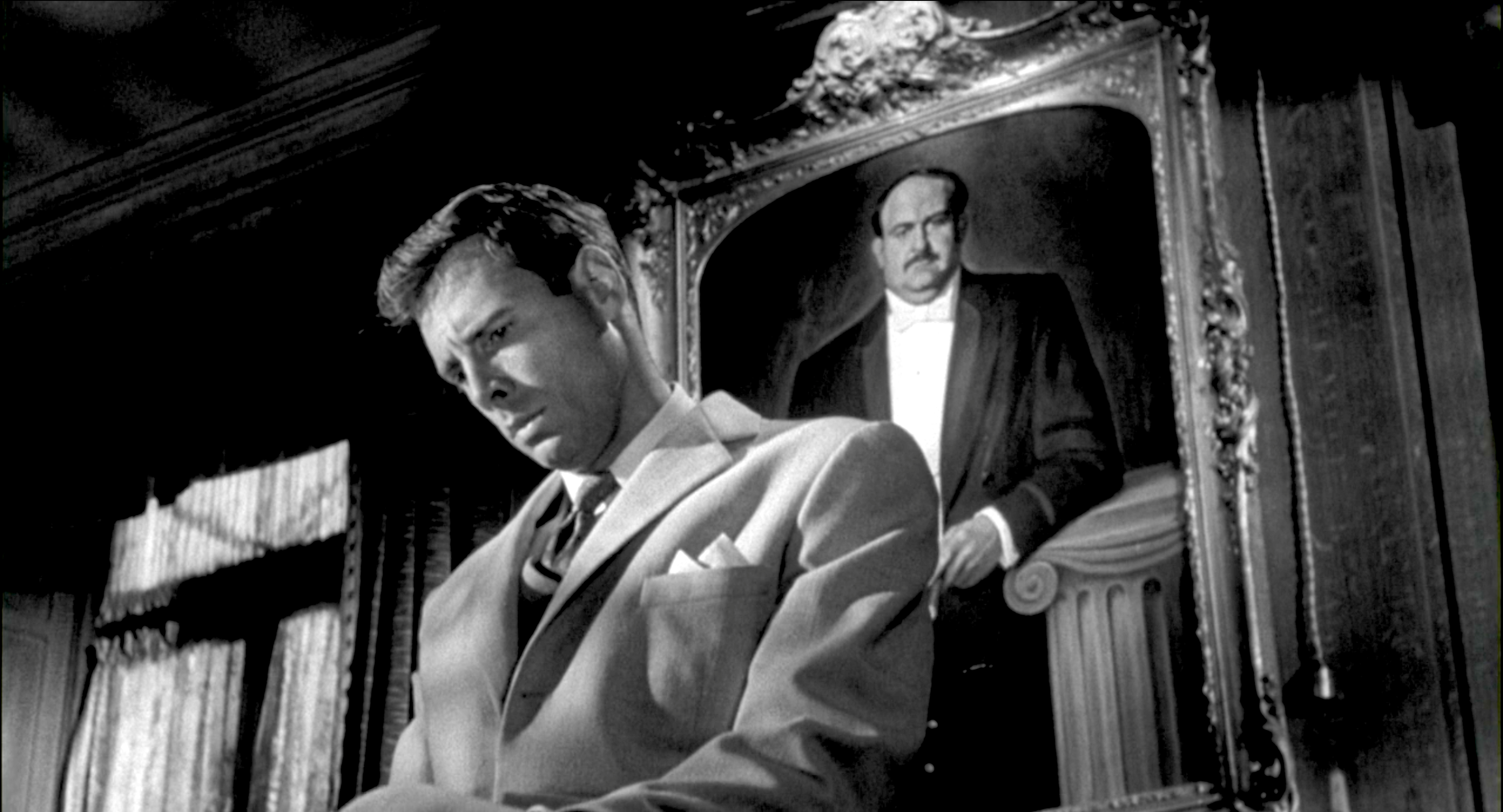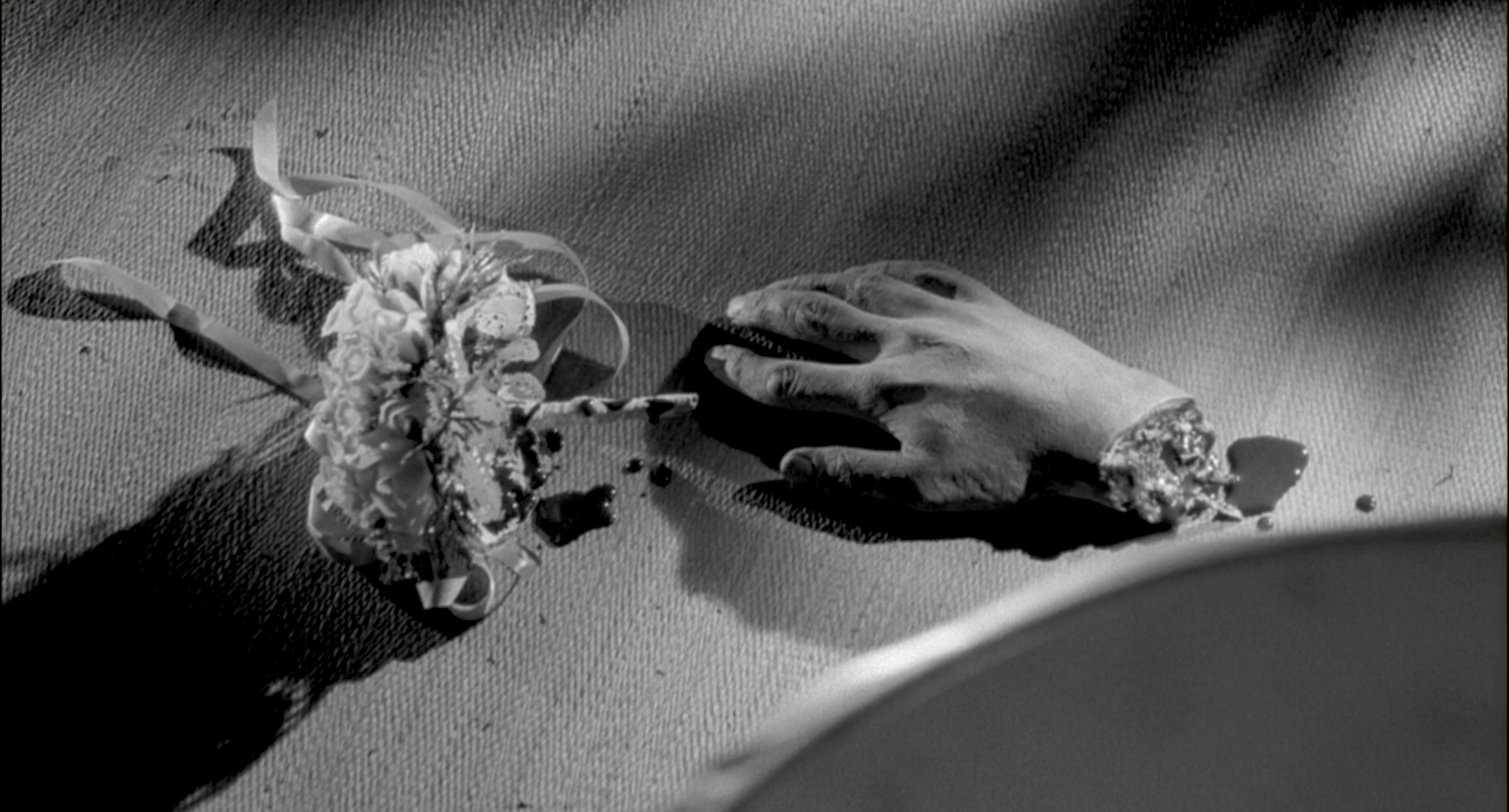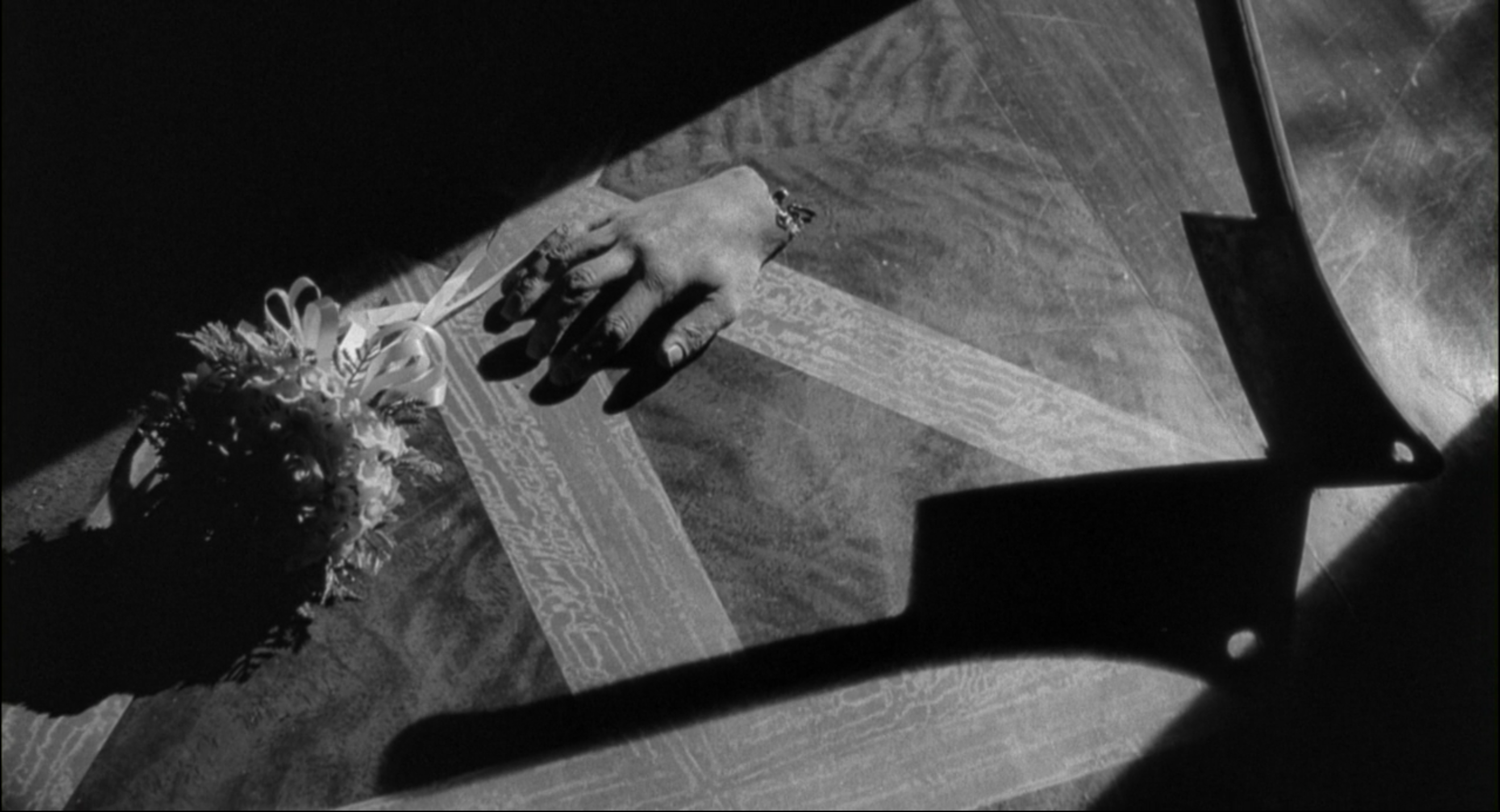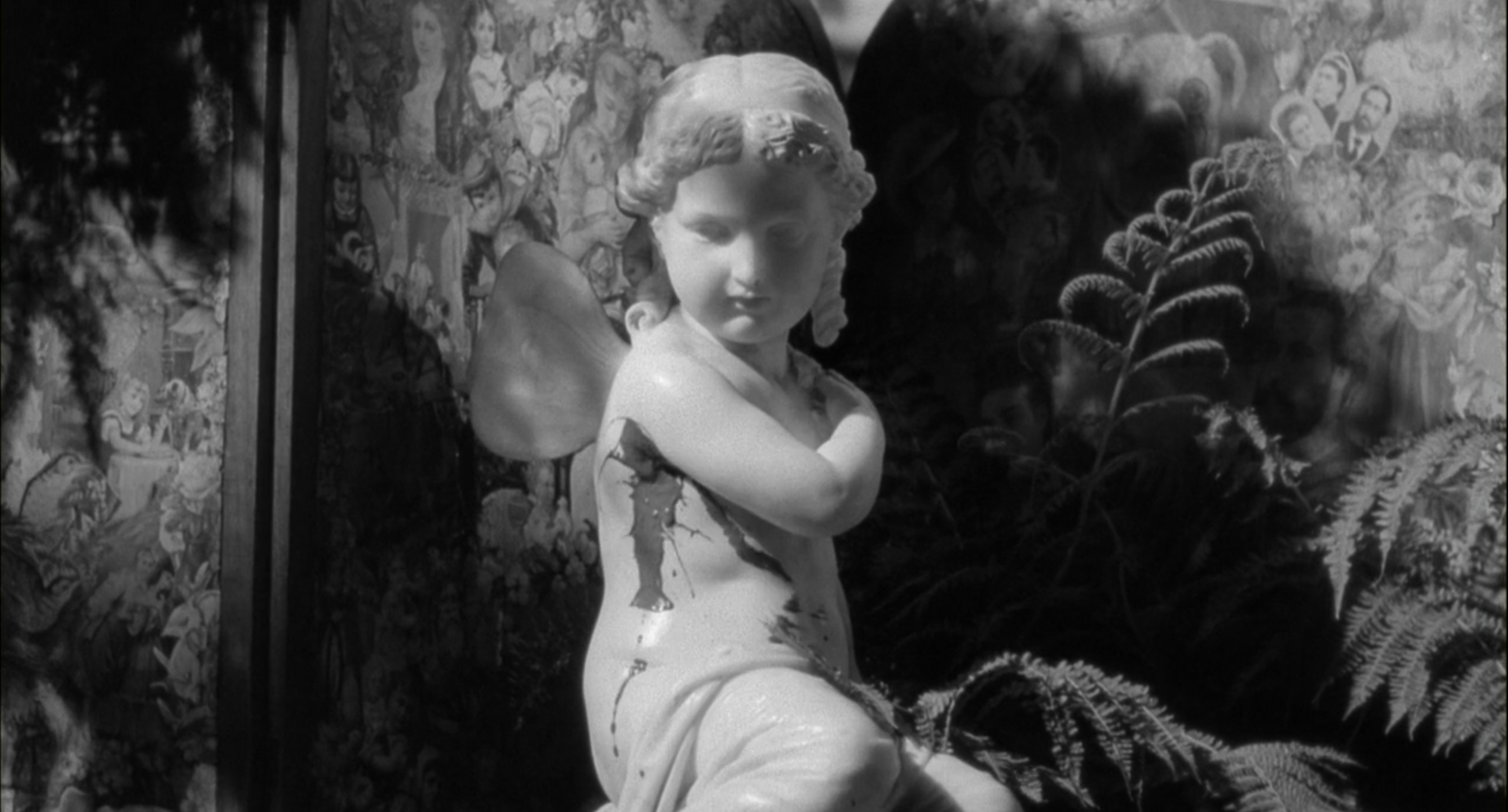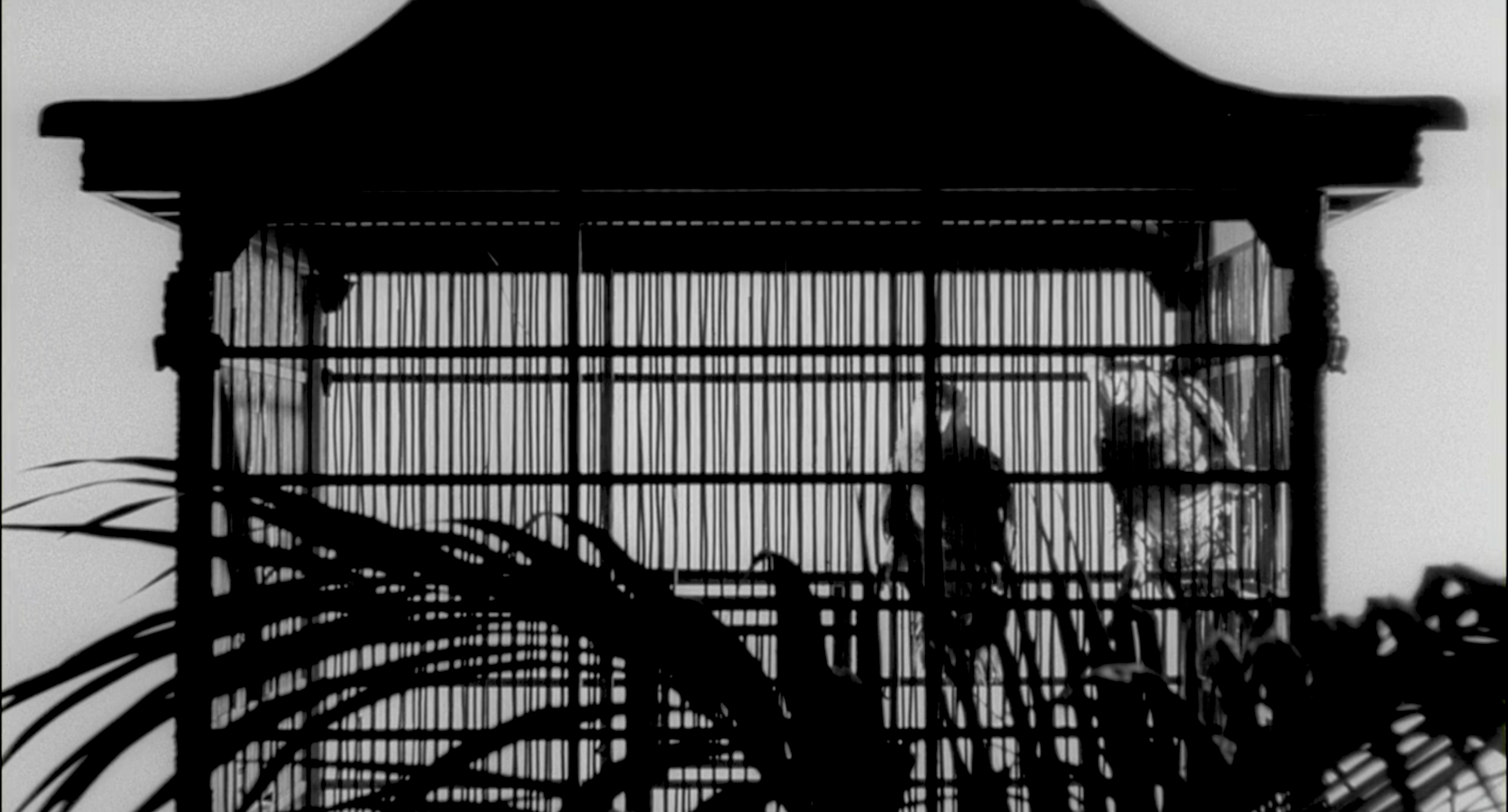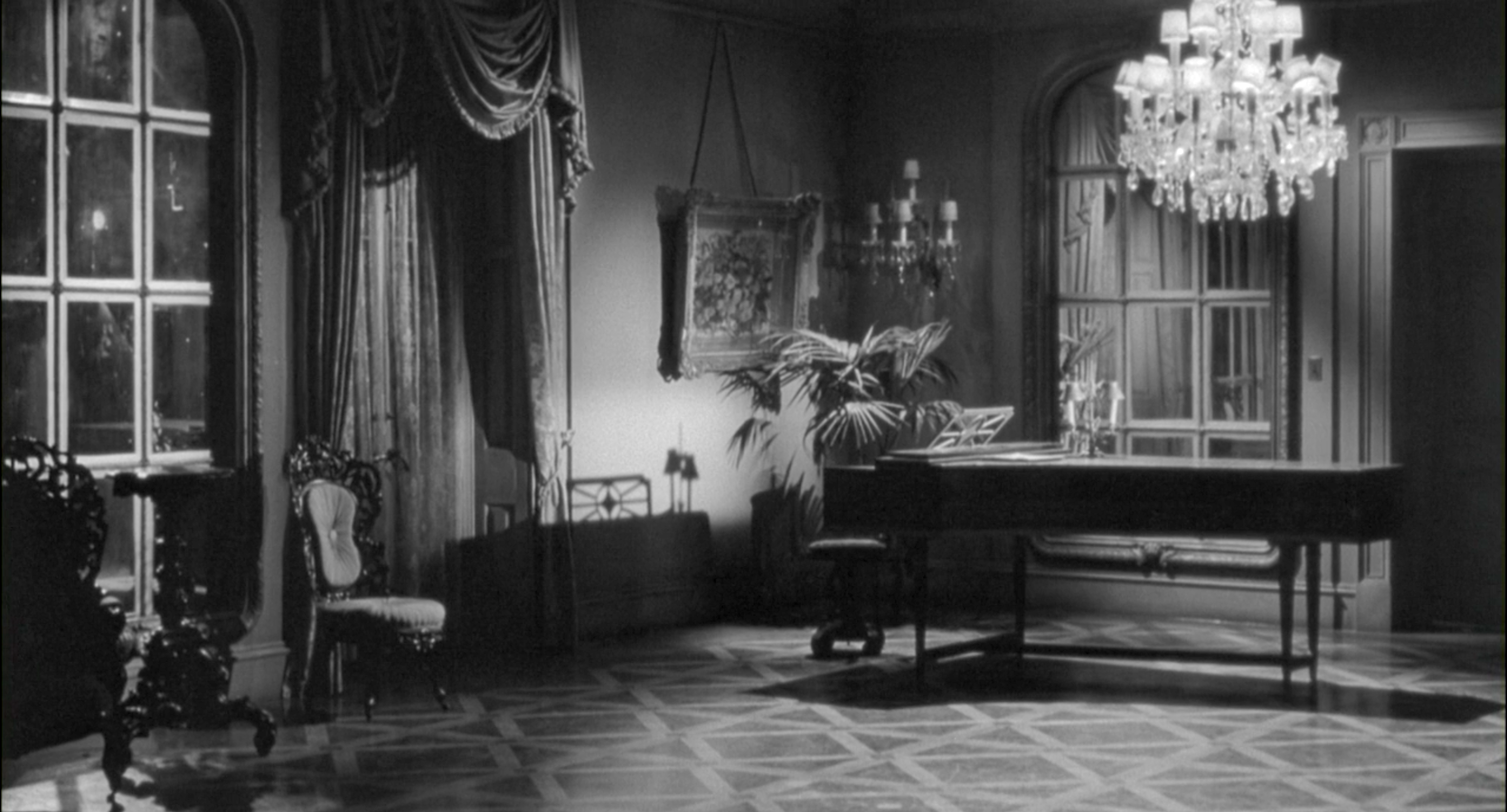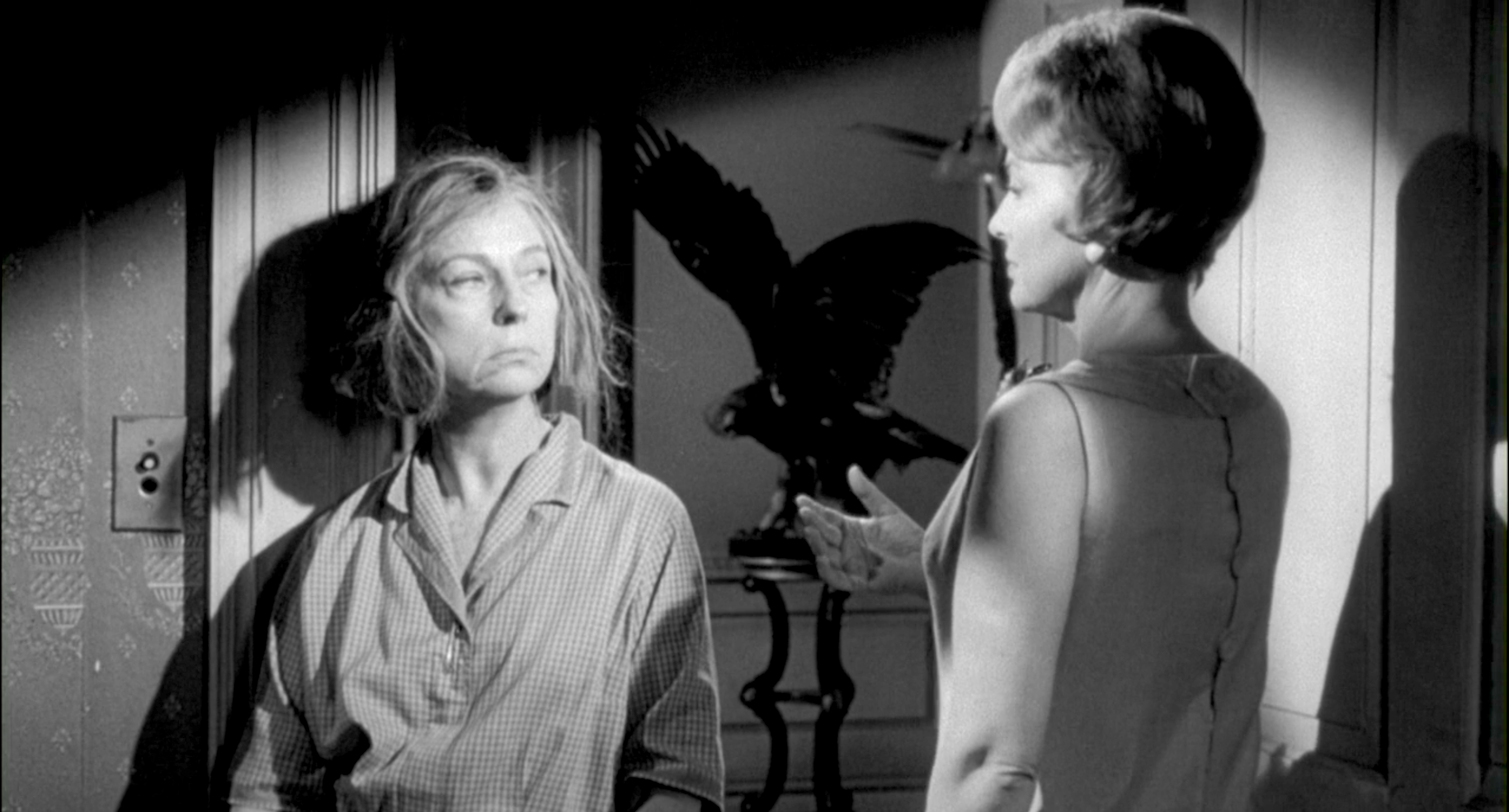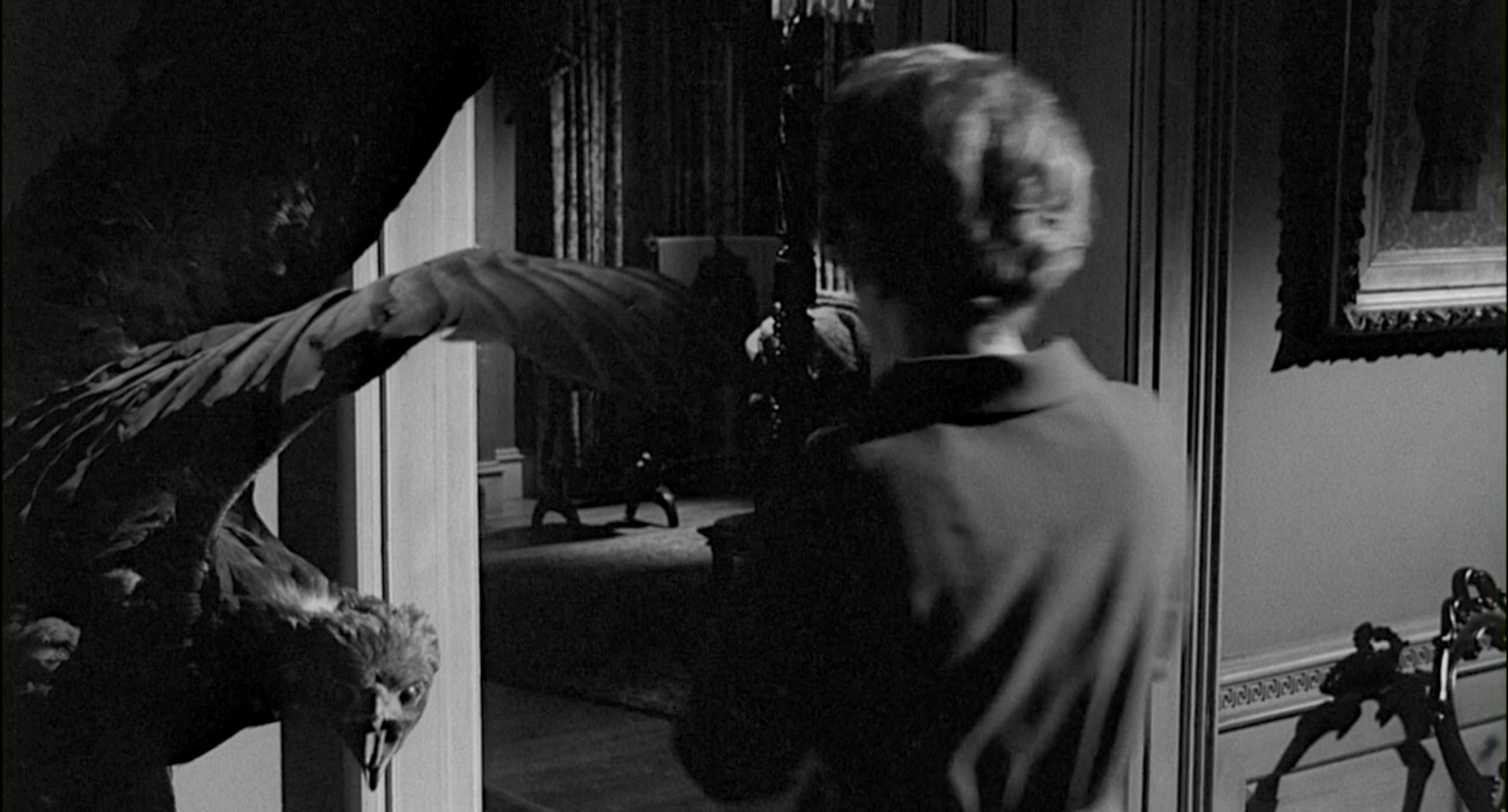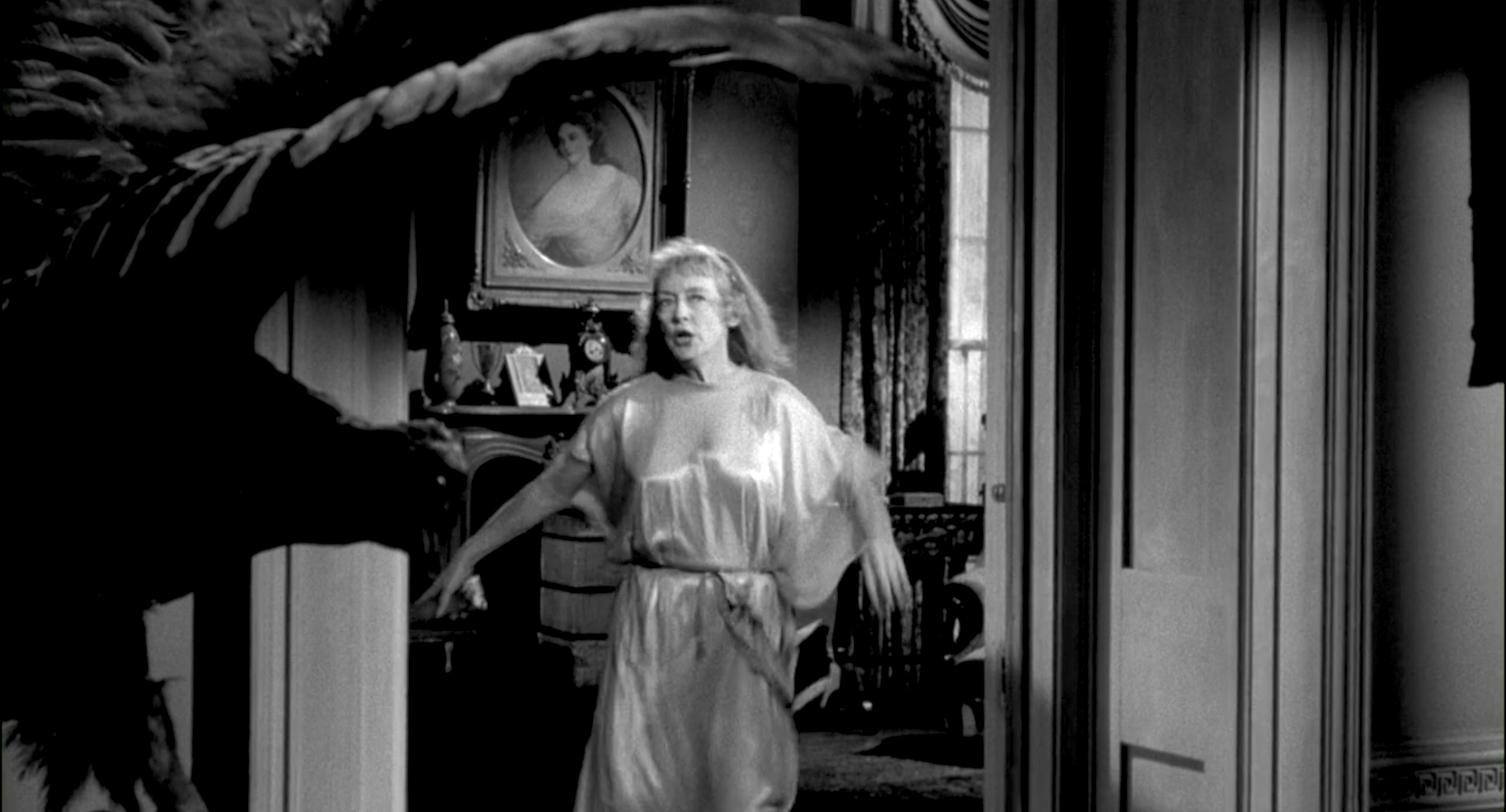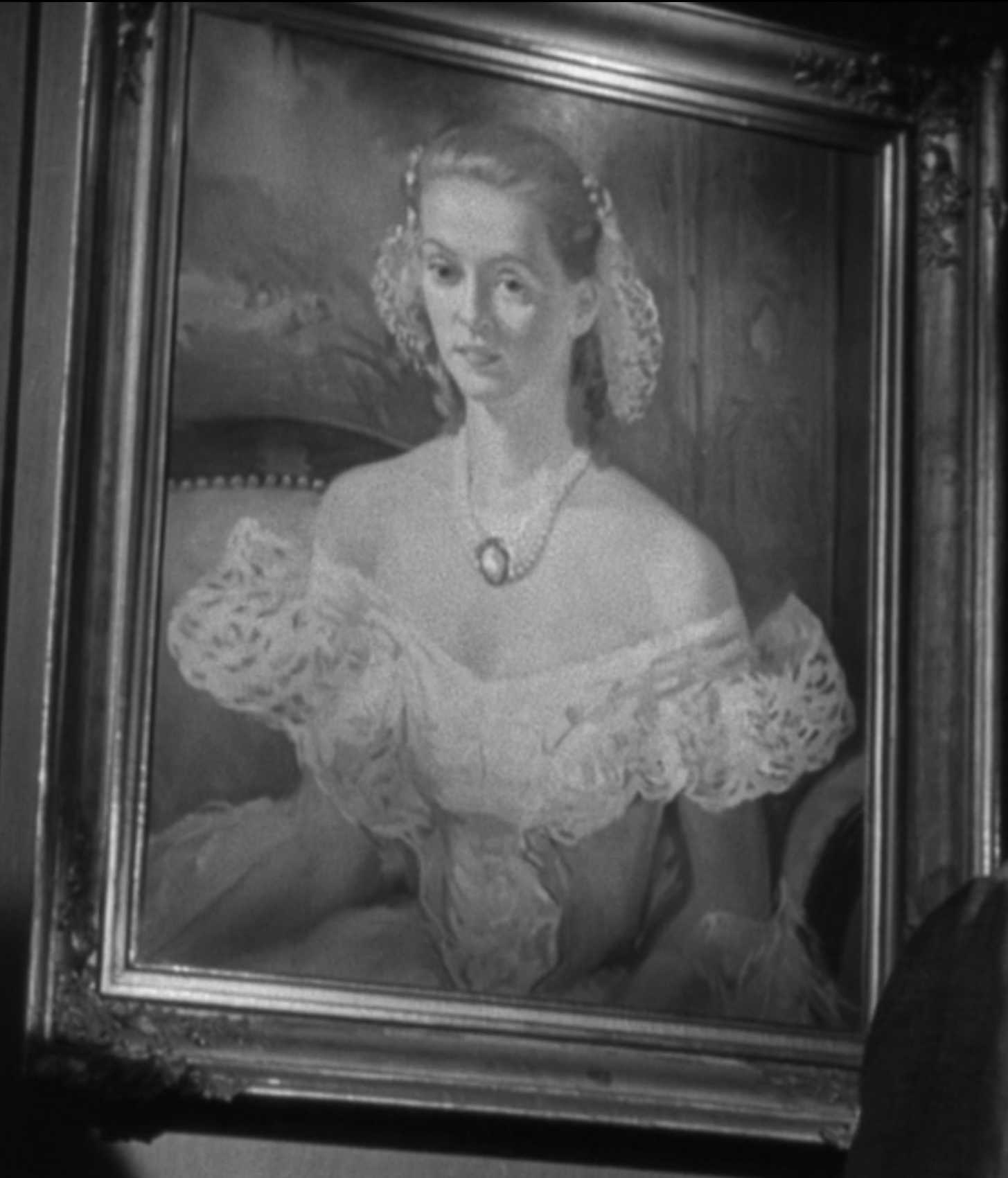 "The Furniture" is our weekly series on Production Design. You can click on the images to see them in much more magnified detail. Here's Daniel Walber...
"The Furniture" is our weekly series on Production Design. You can click on the images to see them in much more magnified detail. Here's Daniel Walber...
“Hush hush, sweet Charlotte,” Patti Page softly croons, “He’ll love you till he dies.” The title song of Hush...Hush, Sweet Charlotte may not be as catchy as “Chim Chim Chiree,” which took the Oscar, but it has a much creepier sort of staying power. Here’s the final verse:
“And every night after he shall die
Yes every night when he’s gone
The wind will sing you this lullaby
Sweet Charlotte was loved by John.”
The music haunts Charlotte Hollis (Bette Davis), along with everything else: her house, her family and her memories.
This Southern Gothic vibe is what separates the film from What Ever Happened to Baby Jane? Well, that and the fact that Joan Crawford walked off the set. But I will leave the offscreen drama to Ryan Murphy...
The Oscar-nominated work of art director William Glasgow and set decorator Raphael Bretton is as essential as the music in fostering this malevolent atmosphere. The house, a Louisiana mansion years past its prime, is the perfect place for a Grande Dame Guignol phantasmagoria.
It sits back from the road, shaded by weeping trees. After a harrowing prelude, the 1964 narrative kicks off with demolition of a once quaint gazebo. This crumpled accessory is but the first limb to be severed from the condemned property.
But the main building puts up a fight.
The imposing front hall and its disorienting staircase seem to suggest that bulldozers and dynamite won’t be nearly enough to flatten this monument to an old glory. An exorcism might be more helpful.
The spirit that haunts the abode was born in 1927, in the film’s prologue. It opens on Charlotte’s father, Big Sam Hollis (Victor Buono), in the process of banishing his daughter’s married lover (Bruce Dern). Sweating under the eyes of both the real patriarch and his enormous portrait, the terrified young man agrees to call off the elopement.
It’s only a matter of minutes before Charlotte finds herself in the conservatory, witnessing John’s murder. Or does she commit it? This is the central ambiguity of the film, the impetus for the spooky visual and aural variations that follow.
Most obvious is the physical manifestation of the violence, the severed hand and the bloody corsage.
John’s dismembered body grips Charlotte’s mind, with a little help from sister Miriam (Olivia de Havilland) and her sweetheart, Dr. Drew Bayliss (Joseph Cotten). The return of both flowers and fingers, joined by a meat cleaver, isn’t even the climax.
The second and third witnesses are both birds, perched in a cage that cinematographer Joseph Biroc has lit like something out of Rashomon. These shots jostle with the troubling images of violence, creating a sensory trauma that echoes forward in time.
The jagged atmosphere is repeated by the architecture of the house. Sharp angles cut the frame, silent paintings watch from the background and mirrors wait to remind Charlotte of her own terror. Suspicious shadows hang from every wall, a debt perhaps to the groundbreaking work of Freddie Francis on 1961’s The Innocents.
But there is also one very specific reference to the birds and the angel. It is a dark presence, an eagle that silently shrieks from its perch between bedrooms and seems to appear in the tensest moments between Charlotte, Miriam and Velma (Agnes Moorehead).
Like so much else in the film, this prop is both a startling reminder of Charlotte’s initial trauma and a confusing puzzle piece in a house full of ambiguous signifiers. What really happened to Charlotte Hollis? As she flaps about the house, trying to make sense of it all, we can only shiver with anticipation.
20th Century Women (2016), Childhood of a Leader (2016), The Exorcist (1973), A Streetcar Named Desire (1950)
